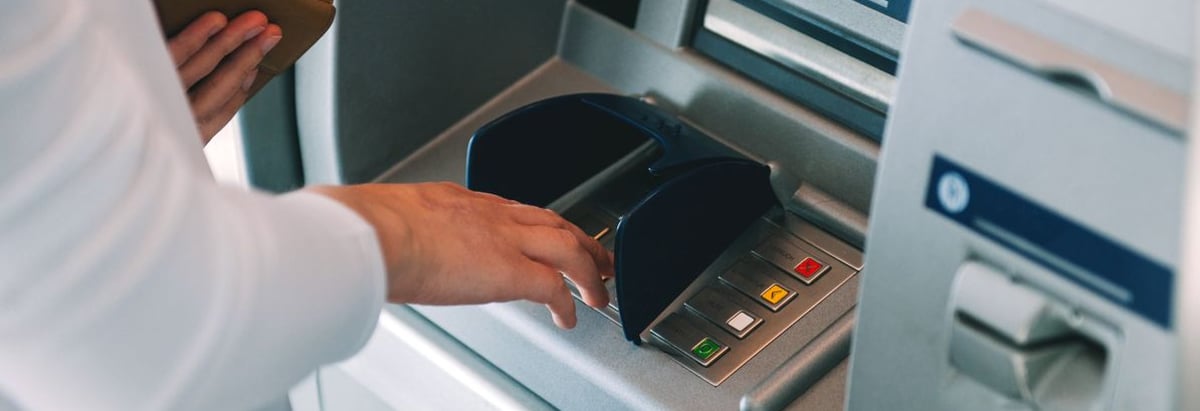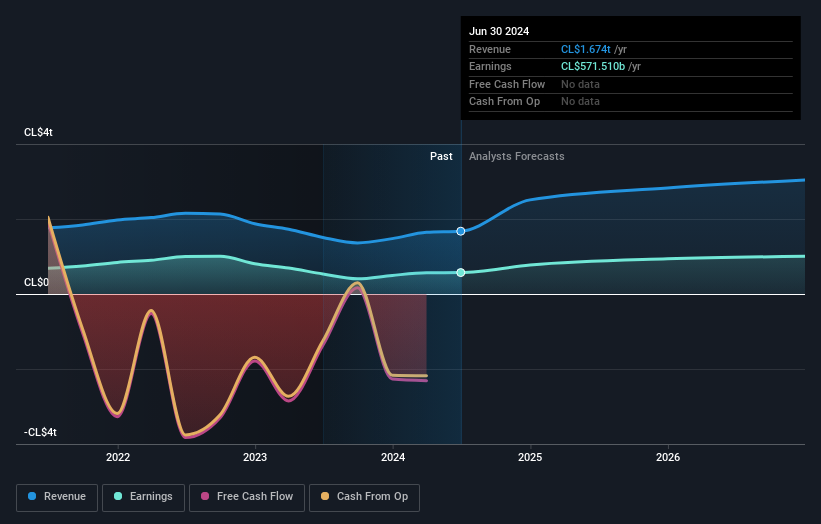Public companies are Banco Santander-Chile's (SNSE:BSANTANDER) biggest owners and were rewarded after market cap rose by CL$296b last week

Key Insights
- The considerable ownership by public companies in Banco Santander-Chile indicates that they collectively have a greater say in management and business strategy
- The largest shareholder of the company is Banco Santander, S.A. with a 67% stake
- Analyst forecasts along with ownership data serve to give a strong idea about prospects for a business
If you want to know who really controls Banco Santander-Chile (SNSE:BSANTANDER), then you'll have to look at the makeup of its share registry. We can see that public companies own the lion's share in the company with 67% ownership. In other words, the group stands to gain the most (or lose the most) from their investment into the company.
Clearly, public companies benefitted the most after the company's market cap rose by CL$296b last week.
In the chart below, we zoom in on the different ownership groups of Banco Santander-Chile.
View our latest analysis for Banco Santander-Chile

What Does The Institutional Ownership Tell Us About Banco Santander-Chile?
Institutions typically measure themselves against a benchmark when reporting to their own investors, so they often become more enthusiastic about a stock once it's included in a major index. We would expect most companies to have some institutions on the register, especially if they are growing.
Banco Santander-Chile already has institutions on the share registry. Indeed, they own a respectable stake in the company. This suggests some credibility amongst professional investors. But we can't rely on that fact alone since institutions make bad investments sometimes, just like everyone does. It is not uncommon to see a big share price drop if two large institutional investors try to sell out of a stock at the same time. So it is worth checking the past earnings trajectory of Banco Santander-Chile, (below). Of course, keep in mind that there are other factors to consider, too.

Hedge funds don't have many shares in Banco Santander-Chile. Banco Santander, S.A. is currently the largest shareholder, with 67% of shares outstanding. With such a huge stake in the ownership, we infer that they have significant control of the future of the company. With 1.3% and 1.2% of the shares outstanding respectively, BlackRock, Inc. and The Vanguard Group, Inc. are the second and third largest shareholders.
While it makes sense to study institutional ownership data for a company, it also makes sense to study analyst sentiments to know which way the wind is blowing. There are plenty of analysts covering the stock, so it might be worth seeing what they are forecasting, too.
Insider Ownership Of Banco Santander-Chile
The definition of company insiders can be subjective and does vary between jurisdictions. Our data reflects individual insiders, capturing board members at the very least. Management ultimately answers to the board. However, it is not uncommon for managers to be executive board members, especially if they are a founder or the CEO.
Most consider insider ownership a positive because it can indicate the board is well aligned with other shareholders. However, on some occasions too much power is concentrated within this group.
We note our data does not show any board members holding shares, personally. It is unusual not to have at least some personal holdings by board members, so our data might be flawed. A good next step would be to check how much the CEO is paid.
General Public Ownership
The general public, who are usually individual investors, hold a 23% stake in Banco Santander-Chile. While this group can't necessarily call the shots, it can certainly have a real influence on how the company is run.
Public Company Ownership
We can see that public companies hold 67% of the Banco Santander-Chile shares on issue. It's hard to say for sure but this suggests they have entwined business interests. This might be a strategic stake, so it's worth watching this space for changes in ownership.
Next Steps:
It's always worth thinking about the different groups who own shares in a company. But to understand Banco Santander-Chile better, we need to consider many other factors. Consider for instance, the ever-present spectre of investment risk. We've identified 1 warning sign with Banco Santander-Chile , and understanding them should be part of your investment process.
Ultimately the future is most important. You can access this free report on analyst forecasts for the company.
NB: Figures in this article are calculated using data from the last twelve months, which refer to the 12-month period ending on the last date of the month the financial statement is dated. This may not be consistent with full year annual report figures.
Valuation is complex, but we're here to simplify it.
Discover if Banco Santander-Chile might be undervalued or overvalued with our detailed analysis, featuring fair value estimates, potential risks, dividends, insider trades, and its financial condition.
Access Free AnalysisHave feedback on this article? Concerned about the content? Get in touch with us directly. Alternatively, email editorial-team (at) simplywallst.com.
This article by Simply Wall St is general in nature. We provide commentary based on historical data and analyst forecasts only using an unbiased methodology and our articles are not intended to be financial advice. It does not constitute a recommendation to buy or sell any stock, and does not take account of your objectives, or your financial situation. We aim to bring you long-term focused analysis driven by fundamental data. Note that our analysis may not factor in the latest price-sensitive company announcements or qualitative material. Simply Wall St has no position in any stocks mentioned.
About SNSE:BSANTANDER
Banco Santander-Chile
Provides commercial and retail banking services in Chile.
Solid track record average dividend payer.
Similar Companies
Market Insights
Community Narratives




